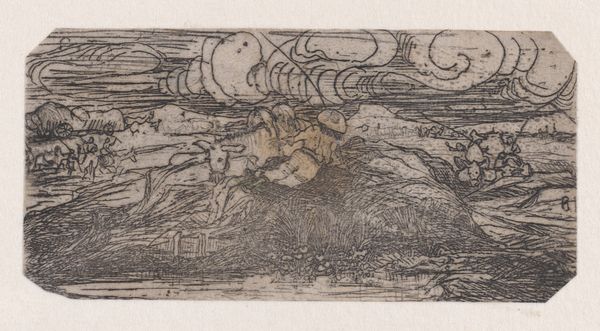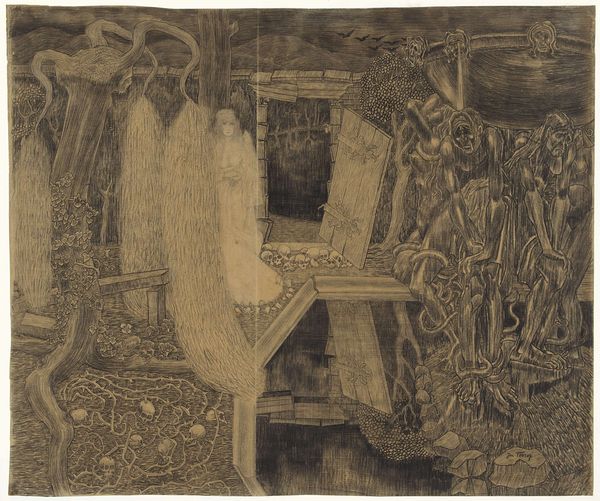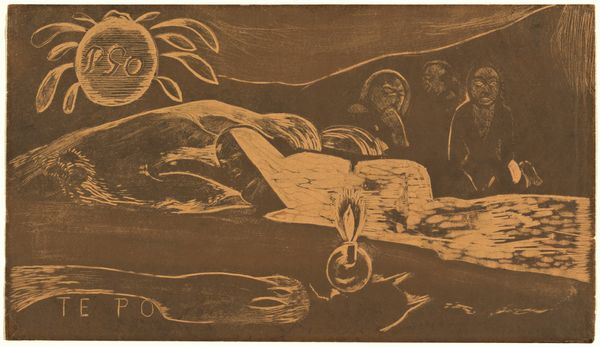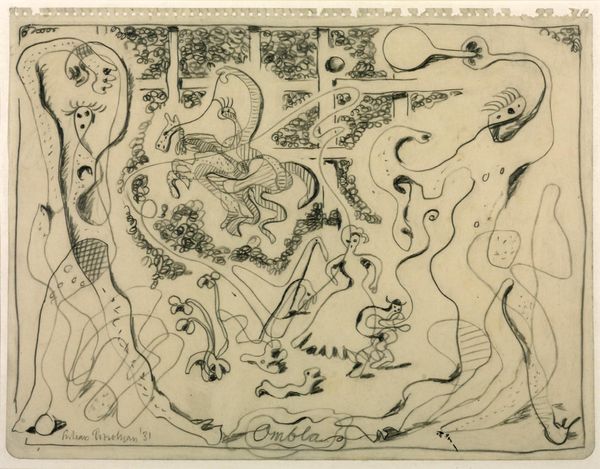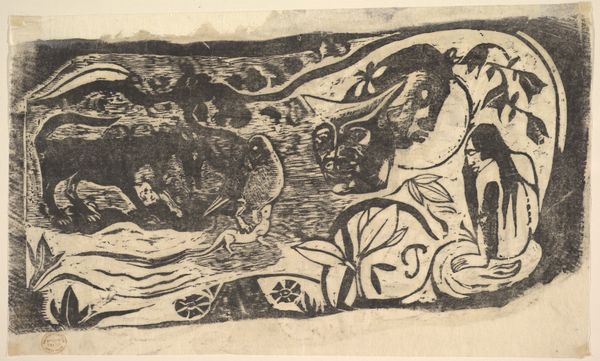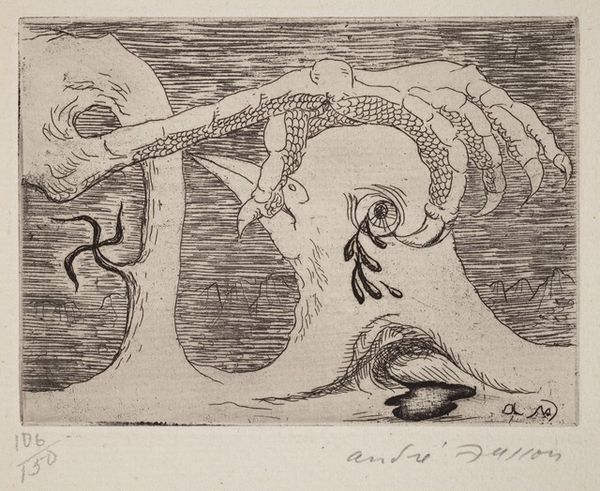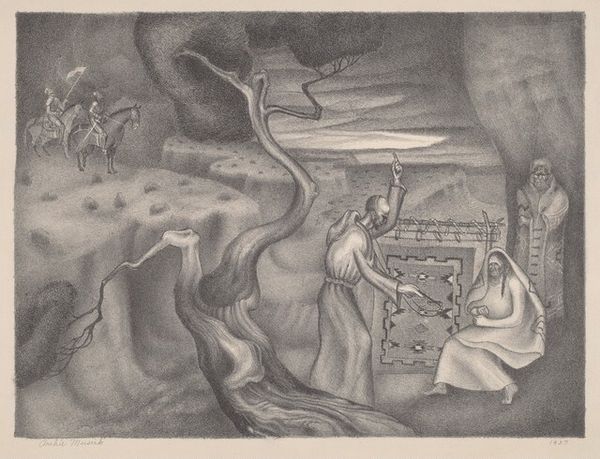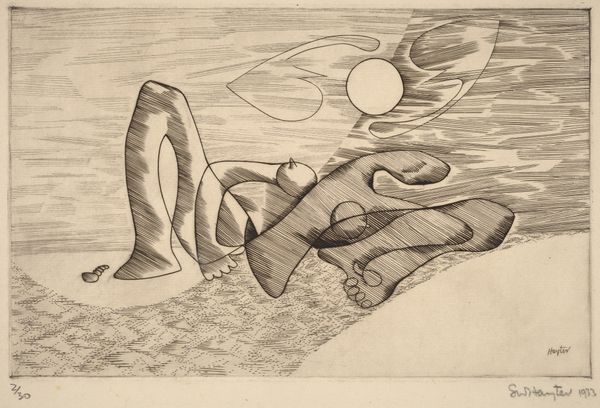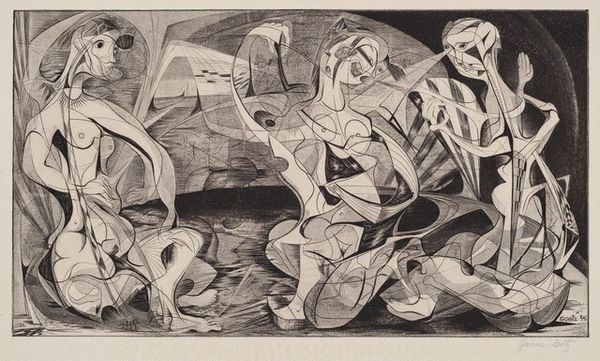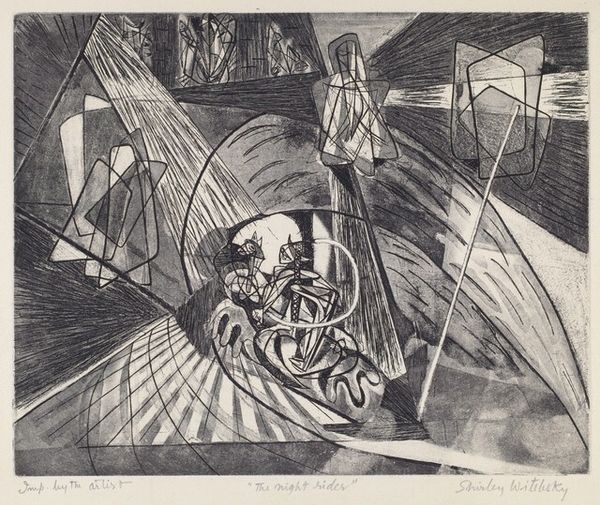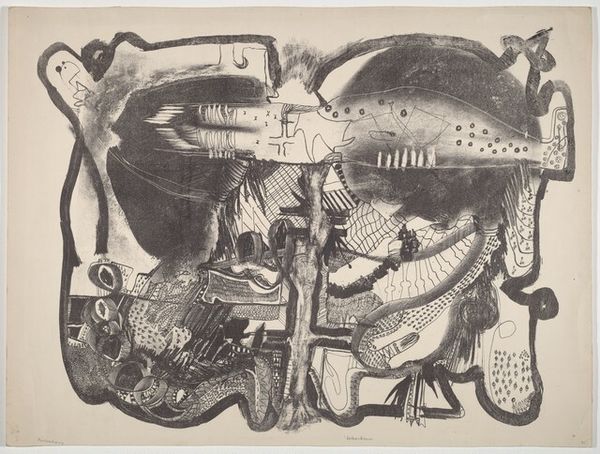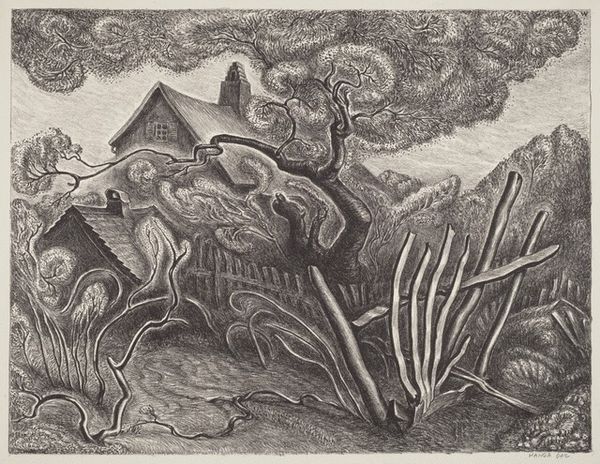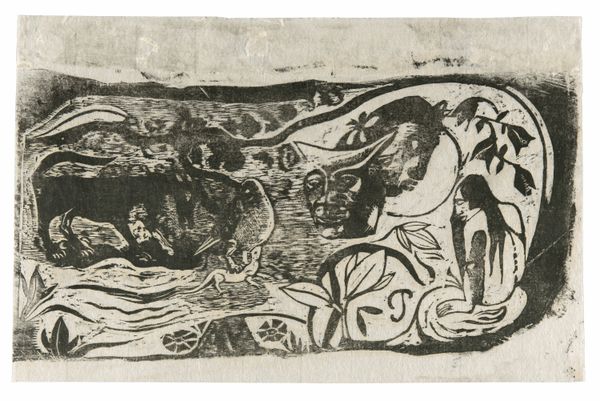
drawing, paper, ink
#
drawing
#
narrative-art
#
landscape
#
etching
#
figuration
#
paper
#
ink
#
symbolism
#
history-painting
Dimensions: height 604 mm, width 753 mm
Copyright: Rijks Museum: Open Domain
Editor: So, this is Jan Toorop’s “O Grave, where is thy Victory?”, made in 1892. It’s ink on paper, a drawing housed at the Rijksmuseum. I find its somber, almost eerie atmosphere quite striking. What do you see in it? Curator: Oh, where to begin? It's more than just somber, wouldn’t you agree? It whispers secrets of life, death, and, dare I say, the absurd dance between the two. Notice the swirling lines, those undulating forms, they’re classic Toorop – a visual manifestation of the Symbolist soul grappling with existence. Does it perhaps remind you of Art Nouveau? Editor: I can definitely see the Art Nouveau influence, but how does it connect with the title and the overall meaning? Curator: The title, lifted straight from the Apostle Paul, frames the entire image. Toorop, in his peculiar way, wrestles with the Christian promise of triumph over death. See the skeletal figures intertwined with the living? They are us, wrestling, doubting, clinging to life, even in the face of the inevitable. And yet, does the rainbow breaking through the dark sky signal any chance of redemption? What do you make of this symbol, in contrast to the darkness? Editor: The rainbow gives the work a touch of hope. So it is a commentary on life and death! This artwork, a reflection on grappling life even when we face inevitable changes, shows more to me now, a layered commentary on mortality and hope. Curator: Exactly. He holds the bitter and the sweet right next to each other; that’s Toorop’s poetry! An intimate expression of mortality in its truthfulness and absurdity. I guess that our perspectives may depend on what mood each of us may be experiencing on the day we look at the picture. I see in art what I seek; and it talks back to me about myself, maybe?
Comments
rijksmuseum about 2 years ago
⋮
The title of this drawing is taken from a letter by wthe Apostle Paul concerning the victory of Faith over Death. Here Death appears as the deliverer from earthly suffering. Lying near an open grave is the body of a man entwined with thorny branches, the symbol of man’s sorrowful earthly existence. Two seraphim (angels) float above the grave and free the dead man from these branches.
Join the conversation
Join millions of artists and users on Artera today and experience the ultimate creative platform.
